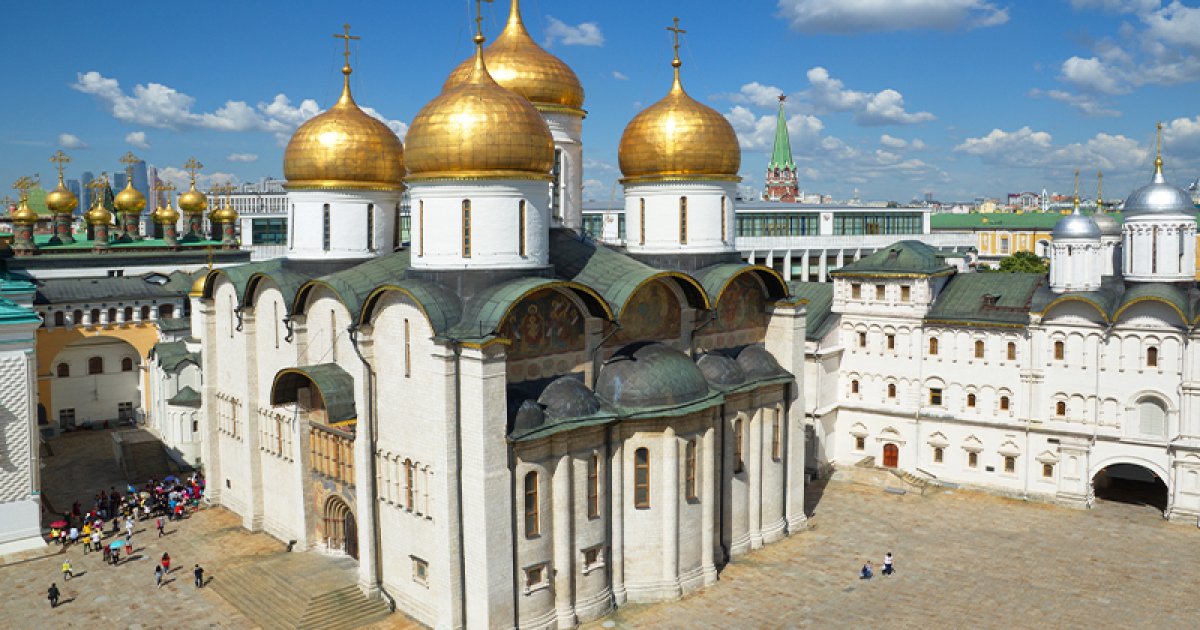KREMLIN, Cathedral Of The Assumption
 Language: English / USA
Language: English / USA
The Cathedral of the Assumption or Dormition is the most majestic of those that overlook Cathedral Square.
For six centuries it was the most important church in all of Russia. It is where patriarchs, metropolitans and bishops were consecrated and princes, tsars and emperors were crowned.
You should also know that this is where most of the metropolitans and patriarchs of the Russian Orthodox Church elected between 1320 and 1700 are buried.
We owe the current building, erected between 1475 and 1479, to Tsar Ivan the Great, who commissioned a total renovation of the cathedral by Russian architects. Unfortunately, when the work was already well under way, the construction collapsed. It could have been an earthquake or design flaw. Either way, the tsar decided to turn to a more experienced Italian architect, the Venetian Aristotle Fioravanti.
The main instruction given to the architect was to follow the model of the cathedral of the same name in Vladimir, the former capital of northeastern Russia. But Fioravanti was able to modify the project to make it even more imposing and majestic by introducing details typical of the Italian Renaissance.
The result is the splendid white stone temple, with 5 apses and three gates overlooking the square. Its facade and sides are divided into four vertical sections with decorative pillars that join in rounded arches. The main section, where the entrance stands out, is distinguished by a magnificent fresco of the Virgin from 1660.
Now pause and press play again once you're inside.
Look at the wonderful 17th century frescoes restored last century!
Go to the altar and admire the spectacular 16-meter-high decorated wall, covered with beautiful icons. Next to it you can admire a copy of one of the most revered icons of the Orthodox Church, the “Virgin of Vladimir” from the 15th century.
In the area of worship dedicated to the tsars and tsarinas, “Monomakh’s Throne" stands out. It was made in 1551 for Ivan the Terrible and decorated with sculptures and bas-reliefs.
As well as the tombs of patriarchs and metropolitans arranged under the flooring and along the walls, you’ll find highly precious relics including the remains of the martyr patriarch Hermogenes.
An interesting fact: this could be a myth, but it is said that the tsar was so enthusiastic about Fioravanti's work that he was never allowed to return to Italy again!



